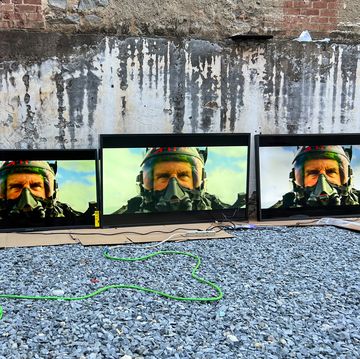Remember when Avatar first premiered back in 2009, and everyone was talking about how in the future all movies would be in 3D? And how a few years later, those same people realized that watching 3D movies would require putting on uncomfortable, dorky glasses all the time? And now 3D movies have become something of an afterthought? Well they might be making a comeback in a few years, because some researchers at MIT's Computer Science and Artificial Intelligence Lab (CSAIL) have developed a 3D movie screen that works without glasses.
3D screens that don't require glasses aren't new. Some 3D TVs use what is called a "parallax barrier" to give a glasses-free 3D effect. A parallax barrier is a series of slits on the screen that split up the image and force each eye to see a different set of pixels. If done right, this can create the illusion of depth without the need for special glasses.
However, parallax barriers only work at specific distances and angles, which make them ill-suited for theaters. The MIT researchers have managed to adapt the parallax barrier to overcome these limitations, making a screen that provides a 3D experience for everyone watching a movie in the theater, without having to look like Clark Kent.
The trick is recognizing that people generally aren't moving around much while they're watching a movie. Because they sit in fixed seats the whole time, the screen doesn't actually have to provide a 3D experience at all angles and distances. It just has to provide a 3D experience at the specific angles and distances where people's eyes are going to be.
So the CSAIL researchers developed a custom screen, called Cinema 3D, that provides a unique parallax barrier for every person in the audience. Using a combination of mirrors and lenses, Cinema 3D can project a high-resolution 3D image to all the moviegoers in the audience.
While Cinema 3D is still in the early stages of development, and the current prototype is no bigger than a piece of paper, the researchers are already working on the next steps. They plan to build larger prototypes and refine the optics, so that future prototypes will use fewer lenses and mirrors (the current prototype uses 50).
If everything goes well, we may be using Cinema 3D to watch the next three Avatar sequels sometime in the next few years. God help us all.
Source: MIT via TechCrunch














